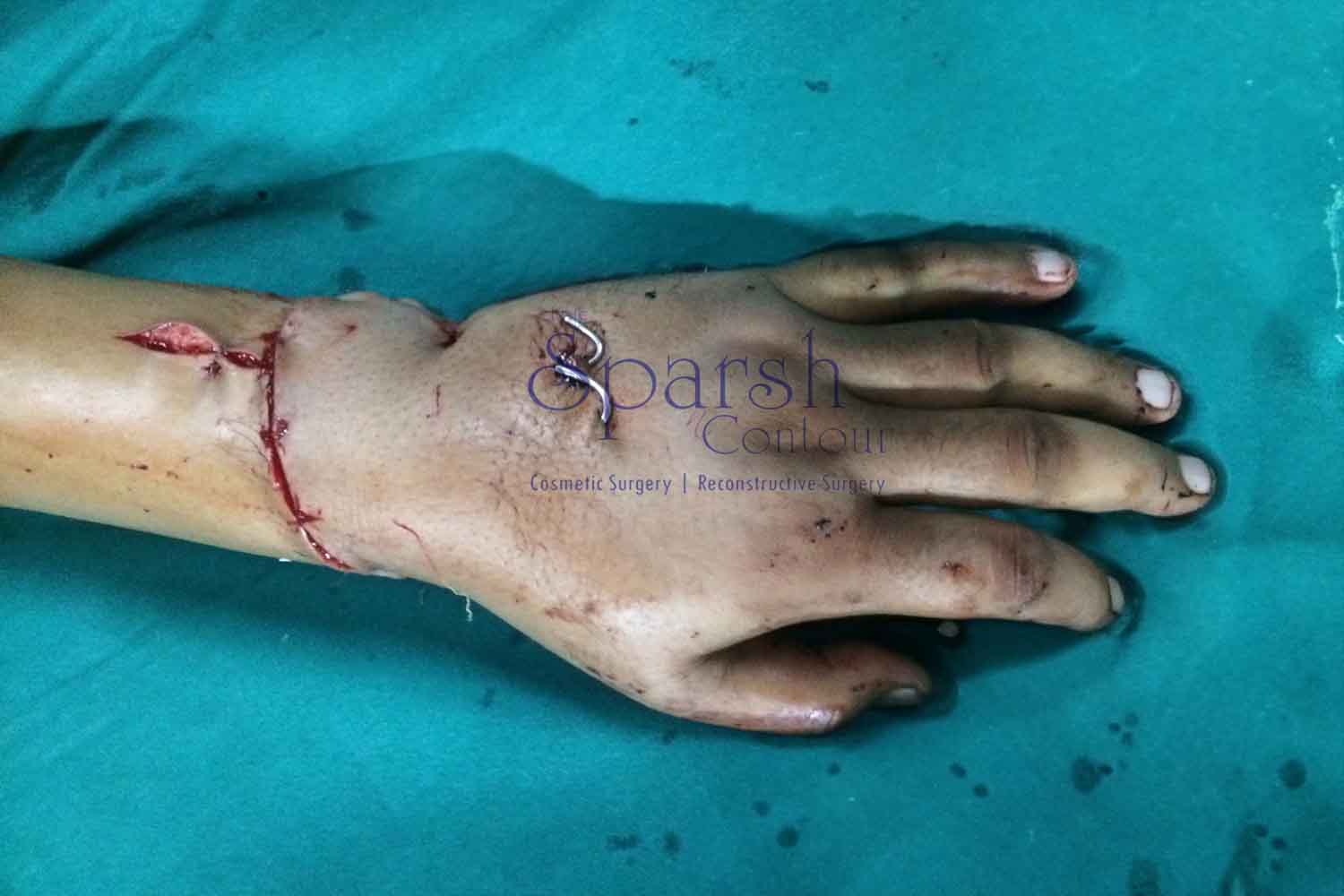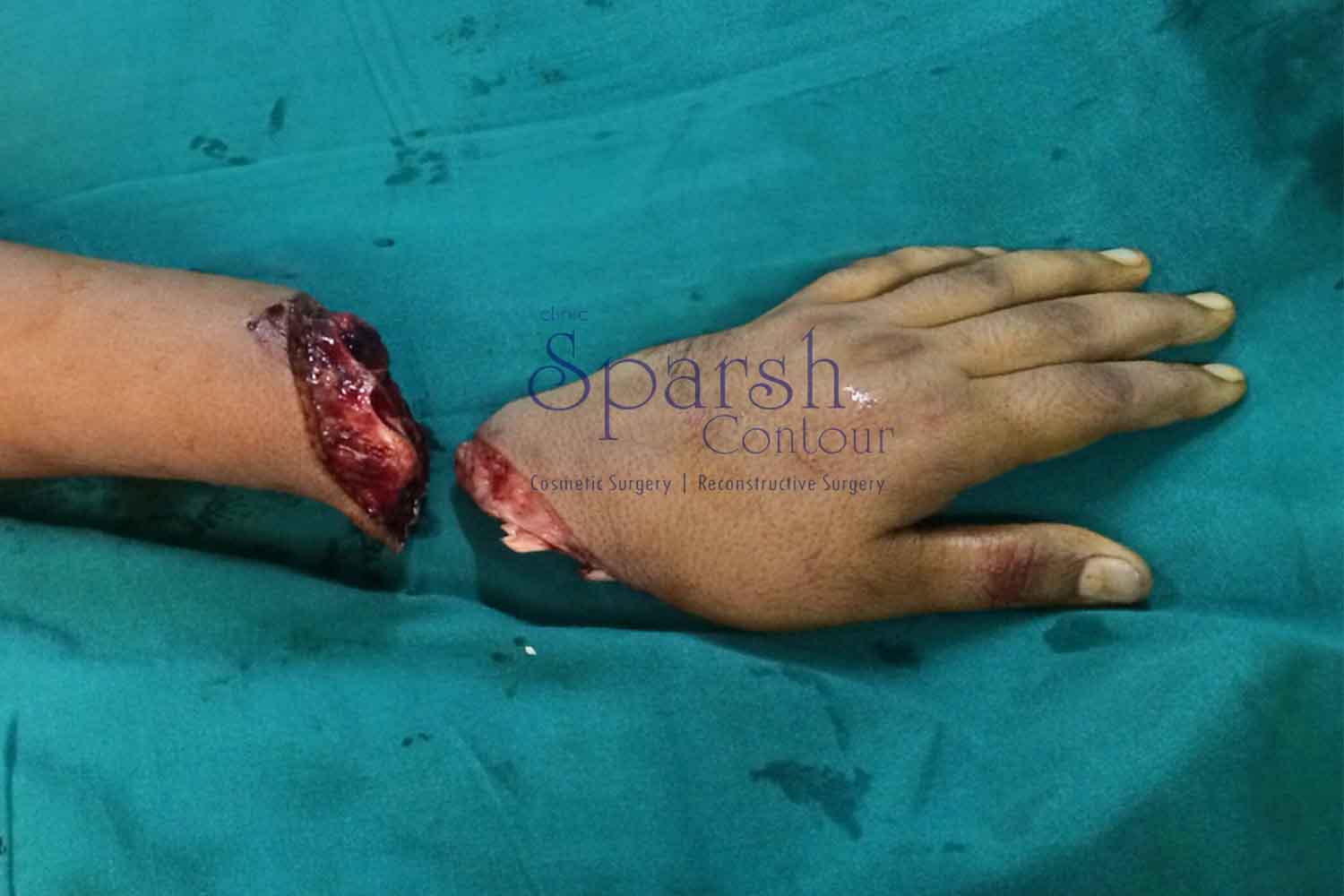Hand Surgeries
Amputation of Finger / Hand Reimplantation Surgery
Reimplantation surgery is a complex and specialized surgical procedure designed to reattach a body part, typically a limb or digit, that has been completely severed or amputated. This surgery is most commonly performed in emergency situations, such as accidents or traumatic injuries, where a finger, hand, arm, or even a toe or foot has been cut off. The goal of reimplantation is to restore as much function and appearance to the affected area as possible, although the success of the procedure depends on various factors, including the type of injury, the time elapsed since the amputation, and the condition of the severed part.
The procedure involves meticulously reconnecting the severed blood vessels, nerves, tendons, muscles, and bones to re-establish blood flow and function to the reattached limb or digit.
Reimplantation surgery is a remarkable procedure that can offer a second chance at functionality and appearance for individuals who have suffered traumatic amputations. However, it is a complex process with variable outcomes, and careful consideration and consultation with a skilled surgeon like Dr. Sushil Nahar are essential for those facing such a life-altering situation.
The procedure involves meticulously reconnecting the severed blood vessels, nerves, tendons, muscles, and bones to re-establish blood flow and function to the reattached limb or digit.
Reimplantation surgery is a remarkable procedure that can offer a second chance at functionality and appearance for individuals who have suffered traumatic amputations. However, it is a complex process with variable outcomes, and careful consideration and consultation with a skilled surgeon like Dr. Sushil Nahar are essential for those facing such a life-altering situation.
 After
After  Before
Before Drag
Hand Surgeries
What Reimplantation surgery is helpful in ?
- Reimplantation surgery is performed to reattach a completely severed limb or digit, such as a finger, hand, arm, toe, or foot, after a traumatic injury.
- The surgery involves reconnecting blood vessels to restore circulation to the reattached part, which is crucial for its survival and function.
- The primary goal of reimplantation surgery is to restore as much function and appearance to the affected body part as possible, allowing the patient to regain use of the limb or digit.
Do's
- gently remove mud, grass or dirt by running under clean water for 5-10 seconds
- wrap the part in moistened gauze (or a handkerchief, or a piece of cloth)
- wrap the part in clean cling-wrap or plastic
- transport the part with the patient to the nearest hospital
Don't
- soak the part in water, or allow it to become waterlogged
- allow the part to dry out
- allow the part to lie directly on ice, as it will freeze (freezing is bad)
- rub, crush or otherwise injure the part
The purpose of the ice is to keep the amputated part cool at 1-4 degrees celsius. This reduces the metabolism of the tissue, allowing it to remain viable for longer. Ideally replantation surgery is commenced within 6 hours of the amputation, and the quicker the better.
our expert answers
frequently asked questions
Who is a candidate for reimplantation surgery?
Candidates for reimplantation surgery are individuals who have experienced a traumatic amputation and whose severed body part is in a condition that allows for reattachment. Factors like the type of injury, time since amputation, and overall health are considered.
What is the recovery process like?
Recovery from reimplantation surgery can be lengthy and involves extensive rehabilitation and physical therapy. The patient will need to work on regaining strength, mobility, and fine motor skills in the reimplanted part.
What are the risks and complications of reimplantation surgery?
Risks include infection, poor blood circulation, nerve damage, and the possibility of the reimplanted part not surviving. The success of the surgery depends on various factors, including the complexity of the injury and the patient's adherence to post-operative care.
How long does it take to see results from reimplantation surgery?
Initial blood flow and sensation may return relatively quickly, but full recovery, including the return of function and strength, can take several months to years. The timeline varies depending on the injury and individual recovery.
Will I regain full use of the reattached limb or digit?
The outcome of reimplantation surgery varies. While some patients regain significant function, others may experience limited movement or sensation. The extent of recovery depends on the severity of the injury, the success of the surgery, and the effectiveness of rehabilitation.
What is the recovery period?
The recovery period varies widely depending on the type of amputation. Blood flow is restored immediately. Sensation in the affected part takes much longer to regain, as an injured nerve must grow (at a rate of 1 inch per month) from the injury site to the tip of the finger before sensation recurs.
The recovery of takes 6 weeks and take approximately 6-12 weeks. Return to work after replantation is usually slow (ie 3 months or more) .
APPOINTMENT
